80. The
Explorers
returned to
their homeland
10 days after
Hotu A Matua
had arrived in
"October 15
(288), which
means their
return trip
began 183 days
after their
departure in
"April 25 (115):
|
Dates according to Manuscript E -
the Explorers: |
|
Departure |
Sea voyage |
Arrival |
|
Vaitu
Nui 25 (115)
"April 25 (115,
*35) |
152 - 115 = 37 days |
Maro 1 (152)
°June 1 (152, *72) |
|
CURSA (*35) |
(*72 - *35) - (41 - 4) = 0 |
CURSA (*72) |
|
°June 1 (152, *72)
CURSA (*72) |
189 - 152 =
37 days |
°July 8 (189,
*109)
CASTOR (*109) |
|
Return in
Tangaroa Uri
25 = "October 25 (298,
*218) |
ANTARES (*249 = *218 + 41) |
|
37 (Sea) + 136 (Land) + 10 (Land) =
183 (= 366 / 2) |
|
time of the Goat |
 |
 |
 |
 |
 |
|
Ca3-21 (6 + 66) |
Ca3-22 (73) |
Ca3-23 |
Ca3-24 |
Ca3-25 |
|
tagata tuu rima ki ruga |
te maitaki |
te henua |
Rei hata ia |
tagata rogo |
|
Right ascension days counted from 0h: |
|
*72 (= *6 + 66) |
HASSALEH (ι Aurigae) |
HAEDUS I
(ζ) |
HAEDUS II
(η) |
CURSA
(β Eridani) |
|
INVISIBLY CLOSE TO THE SUN (helical dates): |
|
June 1 (152) |
2 |
3 |
4 |
5 |
|
°May 28 (148) |
29 |
30 |
31 |
°June 1 (152) |
|
'May 5 (125) |
6 |
7 |
8 |
9 |
|
"April 21 (111) |
22 |
23 |
24 |
Vaitu Nui 25 |
|
MARCH 29 (3-29, 88) |
30 |
31 |
APRIL 1 (91) |
2 |
|
VISIBLE CLOSE TO THE FULL MOON (nakshatra
dates): |
|
December 1 |
2 (*256 = 8 * 32) |
3 (337 = 154 + 183) |
4 |
5 |
|
°November
27 |
28 (*252 = 3 * 84) |
29 (333 = 337 - 4) |
30 |
°December
1 |
|
'November 4 |
5 (*229 = 256 - 27) |
6 (310) |
7 |
8 |
|
"October 21 |
22 (295 = 336 - 41) |
23 (*216 = 3 * 72) |
24 |
25 |
|
SEPTEMBER 28 |
29 (272 = 336 - 64) |
30 (273 = 3 * 91) |
OCTOBER 1 |
2 |
|
182 |
 |
 |
 |
 |
|
Ca10-4 |
Ca10-5 |
Ca10-6 (261 = 9 * 29) |
Ca10-7 |
|
te kiore - te inoino |
kua oho te rima kua kai - ihe nuku hoi |
Tupu te toromiro |
kua noho te vai |
|
Tangaroa Uri 25 |
"October 26 |
27
(300, *220) |
28 |
|
VISIBLE CLOSE TO THE FULL MOON (nakshatra
dates): |
|
Vaitu Nui 25 |
"April 26 |
27
(*37 = *220 - 183) |
28 |
On Easter Island Tangarua Uri
corresponded to the spring month "April north of the
equator. In "October 27 the toromiro tree was
growing - tupu te toromiro - a specimen
who was in the sweet water (of Rano Kau),
kua noho te vai.

... On
Easter Island all the trees were gone and the
mana had fled, but in Rano Kau there was
still an old and dying stump of Sophora Toromiro,
the few seeds of which were saved and brought to the
Botanical Garden in Gothenburg, where 3 new trees
with flowers and new seeds grew up
...
The Toromiro tree was located 185 days after Cursa and 183 days after Rigel and
Capella, i.e. 184 days after the corresponding celestial 'tree'
north of the equator (also said to thrive in
water, μ).
 |
 |
 |
39 |
 |
141 |
 |
|
Ca4-1 |
Ca4-2 (78) |
Ca4-3 |
Ca5-14 (119) |
Ca10-6 (261 = 9 * 29) |
|
kua tupu te rakau |
kua tupu - te kihikihi |
te hau tea |
kua haga te mea ke |
Tupu te toromiro |
|
μ AURIGAE, μ Leporis
(77.6) |
ĸ Leporis (78.0),
RIGEL
(Foot) = β Orionis (78.1), Flaming Star =
IC405 (78.2),
CAPELLA
= α Aurigae (78.4), ο Columbae, τ Orionis
(78.8) |
λ AURIGAE
(79.0),
λ Leporis
(79.6), ρ Aurigae (79.7) |
DRUS (χ) |
(*261) |
|
"April 26 (4 * 29) |
27 |
28 (118 = 4 * 29½) |
"June 7 (2 * 79) |
"October 27 (300) |
|
APRIL 3 |
4 |
5 (95 = 118 - 23) |
MAY 15 (135) |
OCTOBER 4 (277) |
|
CLOSE TO THE FULL MOON (nakshtra dates): |
|
December 6 |
7 (341 = 11 * 31) |
8 |
39 |
|
141 |
|
|
°December 2 (336) |
3 |
4 |
°January 13 (378) |
|
|
'November 9 |
10 (314 = 300 + 14) |
11 |
|
|
|
"October 26 |
27 (300 = 277 + 23) |
28 |
|
|
|
OCTOBER 3 |
4 (277 = 94 +
183) |
5 |
|
|
|
185 |
The Sun king (Hotu A Matua)
arrived to
Easter Island in
Tangaroa Uri
15 (288 = 2
* 144) which
corresponded to
°November 21
(325 = 288 + 37)
in the Gregorian
calendar, the
day when at the
time of the Pope
the Sun had
reached Antares.
The earlier
Julian calendar
distance 26 days
was expanded by
Gregory XIII to
37 days:
... The
Julian calendar day Thursday, 4 October 1582 was
followed by the first day of the Gregorian calendar,
Friday, 15 October 1582 (the cycle of weekdays was not
affected)
...
This we have
established from
the G text, but
not until now
has it been
revealed that
the Julian
calendar date 10
November (314)
in the year 1582
AD
was at heliacal Antares.
325
(°November 21) -
314
(10 November) =
11 =
°October
15 (288) - 4
October (277).
|
INVISIBLY CLOSE TO THE SUN (helical dates): |
|
SEPTEMBER 20 |
21 (*184) |
EQUINOX |
23 |
24 |
25 (268) |
 |
 |
 |
 |
 |
 |
|
Ga7-14 |
Ga7-15 (184) |
Ga7-16 |
Ga7-17 |
Ga7-18 |
Ga7-19 |
| |
|
ANTARES (*249) |
|
|
|
|
November 23 |
24 |
25 (329) |
26 (*250) |
27 |
28 |
|
°November 19 |
20 |
21 (325 = 314 + 11) |
22 |
23 |
24 (*248) |
|
19 - 11 = 8 |
9 November |
(314
= 288 + 26) |
11 |
12
(*236 = 4 * 59) |
13 |
|
'October 27 (300) |
28 |
29 (*222) |
30 |
31 (= 17 + 14) |
'November 1 |
|
"October 13 |
14 |
Tagaroa Uri 15 (288) |
16 |
17 (290 = 331 - 41) |
18 |
|
... The canoes of Ava Rei Pua and
of Hotu were seen near the
(off-shore) islets. On the fifteenth day
of the month of October (tangaroa
uri) the canoe of Hotu and
the canoe of Ava Rei Pua landed.
On the fifteenth day of the month of
October (tangaroa uri),
Nonoma left the house during the
night to urinate outside. At this point
Ira called out to Nonoma,
'Look at the canoe!' Nonoma ran,
he quickly went to Te Hikinga Heru
(a ravine in the side of the crater
Rano Kau) and looked around. There
he saw the double canoe way out near the
(offshore) islets, and the two (hulls of
the canoe) were lashed together. He ran
and returned to the front of the house.
He arrived and called into the house:
'Hey you! This canoe has arrived during
the night without our noticing it!'
Ira asked Nonoma, 'Where is
the canoe, which you say is lying out
there (in the water)?' Nonoma's
voice came back: 'It is out there (in
the water) close to the (offshore)
islets! There it lies, and the two
(hulls) are lashed together.' The four
of them (corrected for 'the six of
them') went out and picked up leaves (on
branches) to give signals. They picked
them up, went and arrived at Te
Hikinga and saw the canoe.
Raparenga got up, picked up the
leaves, took them in his hands, and
waved, waved, waved, waved
... |
|
... When the Pope Gregory XIII updated
the Julian calendar he did not revise
what had gone wrong before 325 AD (when
the Council of Nicaea was held). Thus
the stars were still 3-4 days 'out of
tune' compared to the new calendar ...
the Gregorian 'canoe' was 'crooked'. His
calendar was not in perfect alignment
with the ancient star structure. Because
he had avoided to adjust with the
effects of the precession between the
creation of the Julian calendar and the
Council of Nicaea in 325 A.D. [The
Julian equinox was in the 3rd month of
the year and in its 25th day; 3-25.] |
The sea voyage of the King did not take 37 days but
was 6 days longer:
...
When Hotu A Matua reached Easter Island in
"October 15 (288) this was not 37 but 43 days after
his departure from his old homeland.
288 - 43 = 245 (= 490 / 2) = "September 2.
However, Nonoma
(Jupiter) was out in the night urinating:
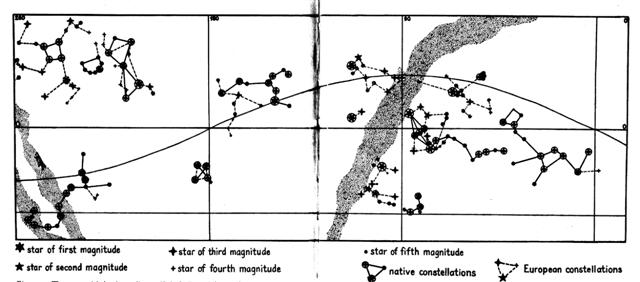
...
Hotu's canoe sailed from Maori to Te
Pito O Te Kainga. It sailed on the second day of
September (hora nui). The canoe of the king (ariki
is used here incorrectly for tapairu
'queen'), of Ava Rei Pua, also sailed on the
other side. They had attached the canoe of Ava
Rei Pua to the middle of the canoe of Hotu
...
Barthel's
comment
regarding
tapairu
(queen) as
incorrectly not
being a king (ariki)
is slightly
amusing, as
the king changed
his 'sex' (his
inclination)
just before Hora
Nui 2, at
which point he
(the 'old
eagle') had
started to
behave like a
female (a
'fish') - being
drawn down
instead of
forcing himself
upwards.
... It
is an interesting fact, although one little
commented upon, that myths involving a canoe
journey, whether they originate from the Athapaskan
and north-western Salish, the Iroquois and
north-eastern Algonquin, or the Amazonian tribes,
are very explicit about the respective places
allocated to passengers.
In the case of maritime, lake-dwelling or
river-dwelling tribes, the fact can be explained, in
the first instance, by the importance they attach to
anything connected with navigation: 'Literally and
symbolically,' notes Goldman ... referring to the
Cubeo of the Uaupés basin, 'the river is
a binding thread for the people. It is a source of
emergence and the path along which the ancestors had
travelled. It contains in its place names
genealogical as well as mythological references, the
latter at the petroglyphs in particular.'
A little further on ... the same observer adds: 'The
most important position in the canoe are those of
stroke and steersman. A woman travelling with men
always steers, because that is the lighter work. She
may even nurse her child while steering ... On a
long journey the prowsman or stroke is always the
strongest man, while a woman, or the weakest or
oldest man is at the helm ...
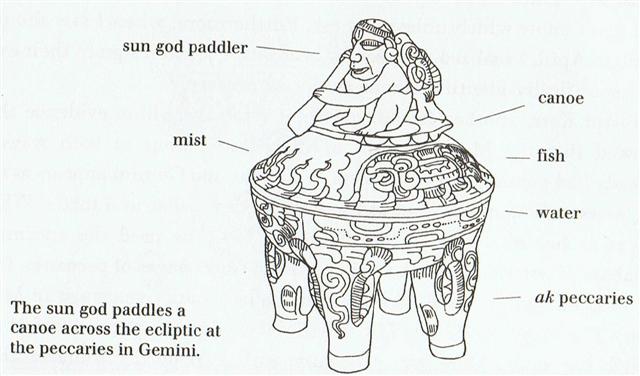
When the
Sun became old and less powerful in the afternoon his
position should be at the helm.
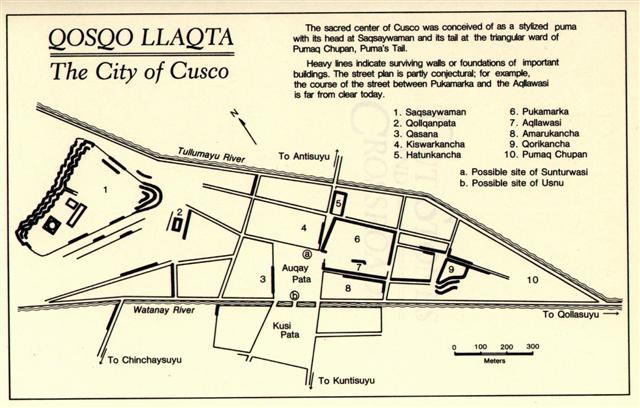
43 (= 80 - 37) was in order to change
from right ascension days (counted from 0h)
to Gregorian calendar days and simultaneously
to change from the time frame of Bharani to that of
the Pope (*41 - 4 = *37).
In Manuscript E
the white and very clean beach waiting for the king (Oromanga)
was his place for 'changing sex' - this was
where the Turtle had broken the spine of Kuukuu
(Mars). From Sirius at Rangi Meamea (JUNE
30) in Anakena 23 (204 = 408 / 2 = 181 +
64 - 41) to Mimosa (*192) in Hora Iti 19
the beach of Oromanga stretched for 27 days
(from Alkes to Mimosa):
|
ST JOHN'S DAY |
|
JUNE 25 |
26 (177) |
27 |
 |
 |
 |
 |
|
Ga4-12 (95) |
Ga4-13 |
Ga4-14 |
Ga4-15 |
|
p Carinae
(159.3) |
φ Hydrae
(160.3) |
no star listed (161) |
VATHORZ POSTERIOR = θ Carinae
(162.1),
PEREGRINI = μ Velorum,
η Carinae (162.6) |
|
August 27 |
28 (240) |
29 (*161) |
30 |
|
°August 23 |
24 (236) |
25 (*157) |
26 |
|
'July 31 |
'August 1 |
2 (214) |
3 (*500) |
|
"July 17
One
Tea |
Anakena 18
Poike |
19 (200)
Pua
Katiki |
20 (*121)
Maunga Teatea |
|
Hanga Takaure |
Hanga Hoonu |
|
NAKSHATRA DATES: |
|
CHRISTMAS EVE |
|
DECEMBER 25 |
26 (360) |
27 |
|
η Aquarii
(342.1), σ Gruis (340.4),
SITULA = κ Aquarii
(342.7) |
ε
Piscis Austrini (343.5), ο
Pegasi, β Gruis (343.8) |
ρ
Gruis (344.0),
MATAR
(Rain) = η Pegasi
(344.2), η Gruis (344.6), β Oct.
(344.7) |
λ
Pegasi (345.0), ξ Pegasi
(345.1), ε Gruis (345.3), τ
Aquarii (345.7), ξ Oct. (345.8),
μ Pegasi (345.9) |
|
February 26 |
27 (58) |
28 (424) |
March 1 (*345) |
|
°February 22 |
TERMINALIA |
24 (55) |
25 |
|
'January 30 (*315) |
31 |
'February 1 (32) |
2 |
|
"January 16 (*301) |
17 |
18 (383) |
19 |
|
On the eighteenth day of the
month of July ('Anakena')
they went on from Hanga
Takaure. |
|
JUNE 28 |
29 (180 = 244 - 64) |
|
SIRIUS |
JULY 1 (*102) |
 |
 |
 |
 |
|
Ga4-16 |
Ga4-17 (100 = 180 -
80) |
Ga4-18 (101) |
Ga4-19 |
|
ν Hydrae (163.1) |
no star listed (164) |
Wings-27
η Oct. (165.4),
ALKES = α Crateris
(165.6) |
ANA-TIPU-4
(Upper-side-pillar -
where the guards
stood)
MERAK = β Ursae
Majoris
(166.2),
DUBHE = α Ursae
Majoris
(166.7) |
|
August 31 |
September 1 (*164) |
2 |
3 (246) |
|
°August 27 |
28 |
29 (*161) |
30 (242) |
|
'August 4 (216) |
5 (*137) |
6 |
7 |
|
"July 21
Mahatua |
22 / 7
Taharoa |
Anakena 23 (204)
RANGI MEAMEA |
24 (*125)
Peke Tau O Hiti
OROMANGA |
|
HANGA HOONU |
|
NAKSHATRA DATES: |
|
DECEMBER 28 |
29 |
|
30 (364) |
31 (*285) |
|
ι Cephei (346.0), λ
Aquarii, γ Piscis
Austrini, σ Pegasi
(346.5) |
SCHEAT AQUARII = δ
Aquarii
(347.0), ρ Pegasi
(347.2), δ Piscis
Austrini (347.4),
FOMALHAUT = α Piscis
Austrini,
τ Gruis (347.8) |
FUM AL SAMAKAH = β
Piscium
(348.3), ζ Gruis
(348.5),
ο Andromedae
(348.9) |
Al Fargh al
Mukdim-24 /
Purva Bhādrapadā-26
/
House-13
SCHEAT PEGASI = β
Pegasi,
π Piscis Austrini
(349.3), κ Gruis
(349.4),
MARKAB PEGASI = α
Pegasi
(349.5) |
|
March 2 |
3 |
4 (*348) |
5 (64) |
|
°February 26 |
27 |
28 (*344) |
°March 1 (60) |
|
'February 3 |
4 |
5 (*321) |
6 (37) |
|
"January 20 |
21 (1-21) |
22 |
23 (388) |
|
They
climbed uphill, went
on, and reached
Poike. When they
arrived, they looked
around and named
(the place) Poike
A Hau Maka. They
climbed up farther
to Pua Katiki.
When they arrived
there, they looked
around and named
(the place) Pua
Katiki A Hau Maka. They
came down from the
height, from the
mountain, from
Pua Katiki, and
reached Maunga
Teatea. They
looked around and
gave the name
Maunga Teatea A Hau
Maka. They
all descended, they
all came down from
Pua Katiki. They
reached Mahatua,
saw it, looked
around, and gave the
name Mahatua A
Hau Maka. Then
they went on and
came to Taharoa.
They saw it, looked
around, and gave the
name Taharoa A
Hau Maka. Again
they went on and
reached Hanga
Hoonu. They saw
it, looked around,
and gave the name
Hanga Hoonu A Hau
Maka ... They
remained in Hanga
Hoonu for five
days. On
the twenty-third day
of the month of July
('Anakena'),
they reached
Rangi Meamea.
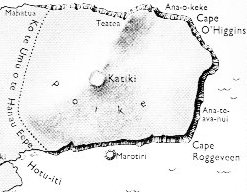
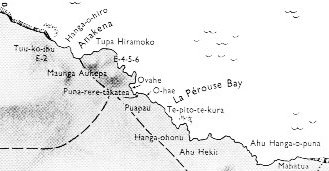 |
|
JULY 2 |
3 (184) |
4 (*105) |
 |
 |
 |
|
Ga4-20 (187 -
84) |
Ga4-21 (104) |
Ga4-22 |
|
11h (167.4)
χ Leonis, χ¹
Hydrae
(167.1),
χ² Hydrae
(167.3) |
AL SHARAS (The
Rib) = β
Crateris
(168.6) |
Al
Zubrah-9 /
Purva
Phalguni-11
ZOSMA (Girdle) =
δ Leonis
(169.2),
COXA (Hips) = θ
Leonis
(169.4) |
|
September 4 |
5 (*168 = 2 *
84) |
6 |
|
°August 31 |
°September 1
(244) |
Hora Nui 2 |
|
'August 8 (*140) |
9 |
10 (222) |
|
"July 25 (*126)
Hau Epa |
26
Hanga Moria One |
27
Oromanga |
|
OROMANGA |
|
NAKSHATRA DATES: |
|
JANUARY 1 (366) |
2 |
3 (*288) |
|
23h (350.0)
υ, θ Gruis
(350.0), π
Cephei (350.6),
ι Gruis (350.9) |
SIMMAH = γ
Piscium
(351.7) |
φ Aquarii
(352.0),
ψ Aquarii
(352.4),
χ Aquarii
(352.6), γ
Tucanae, φ Gruis
(352.8) |
|
March 6 (*350) |
7 (66) |
8 (432) |
|
°March 2
(*346) |
3 |
4 (63) |
|
'February 7 |
8 (*324) |
9 (40) |
|
"January 24 |
25 (*310) |
26 |
|
When they
arrived there,
they looked
around and gave
the name
Rangi Meamea A
Hau Maka.
They also named
the mountain
Peke Tau O Hiti
A Hau Maka.
They went around
to the other
side of the
mountain Hau
Epa, looked
around, and gave
the name Hau
Epa A Hau Maka.
When he (i.e.
Ira) saw
that the beach
was white and
clean, he said,
'Hey , you! Here
is the plain
where the kind
can live!' They
stayed there and
surveyed the
plain with great
care. Ira knew
with certainty
that it was very
good. He named
the bay Hanga
Moria One
and the plain
Oromanga.
[Though
significantly without
the addition of
A Hau Maka -
which had been
added by the
kuhane of
Hau Maka.]
 |
|
The Fig Tree
where Raven was
delayed seems to
refer to the
place of Zosma
and Coxa
(Cb6-27), where
the sex of
Atea
changed from
female to male:
...
Atea then
became the wife
of
Rua-tupua-nui,
Source of Great
Growth, and they
became the
parents of all
the celestial
beings, first
the shooting
stars, then the
Moon and the
Sun, next the
comets, then the
multitude of
stars and
constellations,
and finally the
bright and dark
nebulae. When
this tremendous
task had been
accomplished
Atea took a
third husband,
Fa'a-hotu,
Make Fruitful.
Then occurred a
curious event.
Whether Atea
had wearied of
bringing forth
offspring we are
not told, but
certain it is
that Atea
and her husband
Fa'a-hotu
exchanged sexes.
Then the eyes of
Atea
glanced down at
those of his
wife Hotu
and they begat
Ru. It
was this Ru
who explored the
whole earth and
divided it into
north, south,
east, and west
...
 |
|
They all sat
down and rested
[on the plain of
Oromanga],
when suddenly
they saw that a
turtle had
reached the
shore and had
crawled up on
the beach. He [Ira]
looked at it and
said, 'Hey, you!
The turtle has
come on land!'
He said, 'Let's
go! Let's go
back to the
shore.' They all
went to pick up
the turtle.
Ira was the
first one to try
to lift the
turtle - but she
didn't move.
Then
Raparenga
said, 'You do
not have the
necessary
ability. Get out
of my way so
that I can have
a try!'
Raparenga
stepped up and
tried to lift
the turtle - but
Raparenga
could not move
her. Now you
spoke, Kuukuu:
'You don't have
the necessary
ability, but I
shall move this
turtle. Get out
of my way!'
Kuukuu
stepped up,
picked up the
turtle, using
all his
strength. After
he had lifted
the turtle a
little bit, he
pushed her up
farther. No
sooner had he
pushed her up
and lifted her
completely off
the ground when
she struck
Kuukuu with
one fin. She
struck downward
and broke
Kuukuu's
spine.The turtle
got up, went
back into the
(sea) water, and
swam away. All
the kinsmen
spoke to you
(i.e. Kuukuu):
'Even you did
not prevail
against the
turtle!'
They put the
injured
Kuukuu on a
stretcher and
carried him
inland. They
prepared a soft
bed for him in
the cave and let
him rest there.
They stayed
there, rested,
and lamented the
severely injured
Kuukuu.
Kuukuu
said, 'Promise
me, my friends,
that you will
not abandon me!'
They all
replied, 'We
could never
abandon
you!' They
stayed there
twenty-seven
days in
Oromanga.
Everytime
Kuukuu
asked, 'Where
are you,
friends?' they
immediately
replied in one
voice, 'Here we
are!' They all
sat down and
thought. They
had an idea and
Ira
spoke, 'Hey,
you! Bring the
round stones
(from the shore)
and pile them
into six heaps
of stones!' One
of the youths
said to Ira,
'Why do we want
heaps of stone?'
Ira
replied, 'So
that we can all
ask the stones
to do
something.' They
took (the
material) for
the stone heaps
(pipi horeko)
and piled up six
heaps of stone
at the outer
edge of the
cave. Then they
all said to the
stone heaps,
'Whenever he
calls, whenever
he calls for us,
let your voices
rush (to him)
instead of the
six (of us)
(i.e., the six
stone heaps are
supposed to be
substitutes for
the youths).
They all drew
back to profit
(from the
deception) (?
ki honui)
and listened. A
short while
later, Kuukuu
called. As soon
as he had asked,
'Where are you?'
the voices of
the stone heaps
replied, 'Here
we are!' All
(the youths)
said, 'Hey, you!
That was well
done!'
...
 |
|
JULY 5 (186) |
6 (*107) |
7 |
8 |
9 |
 |
 |
 |
 |
 |
|
Ga4-23 |
Ga4-24 |
Ga4-25 (108) |
Ga4-26 |
Ga4-27 |
|
φ Leonis
(170.0),
ALULA = ξ, ν
Ursae
Majoris
(170.5),
LABRUM = δ
Crateris
(170.6) |
σ Leonis
(171.1), λ
Crateris
(171.6), ι
Leonis, ε
Crateris
(171.9) |
γ Crateris,
π
Centauri
(172.0), κ
Crateris
(172.5), τ
Leonis
(172.8) |
ο¹ Centauri
(173.8) |
GIAUZAR = λ
Draconis
(174.0), ξ
Hydrae
(174.3), ο²
Centauri, λ
Centauri
(174.8) |
|
September 7 |
8 |
9 (*172) |
10 |
11 (254) |
|
°September 3 |
4 |
5 (*168) |
6 |
7 (250) |
|
'August 11 |
12 (*144) |
13 |
14 |
15 (227) |
|
"July 28 |
29 (*130) |
30 |
31 |
'August 1
(213) |
|
OROMANGA |
|
NAKSHATRA
DATES: |
|
JANUARY 4 |
5 (*290) |
6 |
7 (372) |
8 |
|
CROSS-BARS |
ο Gruis,
Snowball
Nebula =
NGC7662
Andromedae
(355.0), τ
Oct. (355.3) |
no star
listed (356) |
ι Phoenicis
(357.3), ι
Piscium
(357.4),
λ Andromedae
(357.9) |
|
ο Cephei
(353.3),
KERB = τ
Pegasi
(353.6) |
κ Piscium
(354.2), θ
Piscium
(354.4),
υ Pegasi
(354.9) |
|
March 9 |
10 (*354) |
11 |
12 |
13 (72) |
|
°March 5 |
6 (*350 =
290 + 60) |
7 |
8 |
9 (68) |
|
'February 10
(41) |
11 |
12 |
13 (*329) |
2-14 |
|
"January 27 |
28 |
29 (*314) |
30 |
31 |
|
... Robur
Carolinum,
Charles'
Oak, the
Quercia
of Italy and
the
Karlseiche
of Germany,
was formally
published by
Halley in
1679 in
commemoration
of the Royal
Oak of his
patron,
Charles II,
in which the
king had
lain hidden
for
twenty-four
hours after
his defeat
by Cromwell
in the
battle of
Worcester,
on the 3rd
of September
1651 ...
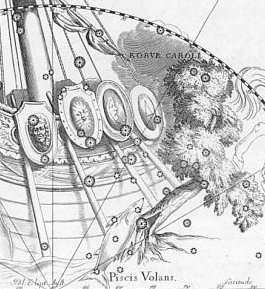 |
| 16 |
JULY 26 |
27 |
|
28 |
29 (210) |
30 (*131) |
 |
 |
 |
 |
 |
| Ga5-17 |
Ga5-18 (101 + 27) |
Ga5-19 |
Ga5-20 |
Ga5-21 |
| Al Áwwā'-11 / Shur-mahrū-shirū-18 (Front or West Shur?)
Sombrero Galaxy = M104 Virginis (191.1), ρ Virginis (191.4), PORRIMA = γ Virginis, γ Centauri (191.5) |
ι Crucis (192.2), β Muscae (192.5), MIMOSA = β Crucis (192.9) |
no star listed (193) |
κ Crucis (194.4), ψ Virginis (194.5), μ Crucis, λ Crucis (194.6), ALIOTH = ε Ursae Majoris, ι Oct. (194.8) |
MINELAUVA = δ Virginis (195.1), COR CAROLI = α Canum Ven. (195.3) |
| September 28 |
29 (*192) |
30 (273) |
October 1 |
2 |
| °September 24 |
25 (*188) |
26 |
27 (270) |
28 |
| 'September 1 |
2 (*165) |
3 |
4 |
5 (248) |
| "August 18 (*150) |
19 (231) |
Hora Iti 20 |
21 |
22 |
| OROMANGA |
PAPA O PEA |
| NAKSHATRA DATES: |
| JANUARY 25 |
26 |
|
27 (392) |
28 |
29 (*314) |
| ξ Phoenicis (9.0), ρ Tucanae (9.1), DENEB KAITOS = β Ceti, η Phoenicis (9.4), AL NITHĀM = φ¹ Ceti (9.6) |
ACHIRD = η Cassiopeiae (10.7) |
Legs-15
ν Andromedae (11.0), φ² Ceti (11.1), ρ Phoenicis (11.2), η Andromedae (11.4) |
CIH = γ Cassiopeiae, λ Tucanae (12.4), φ³ Ceti (12.6), μ Andromedae (12.8) |
φ4 Ceti (13.2) |
| March 30 |
31 (*375) |
April 1 (91) |
2 |
3 |
| °March 26 |
27 |
28 (*372) |
29 (88) |
30 |
| 'March 3 |
4 |
5 (64) |
6 (*350) |
7 |
| "February 17 |
18 |
19 (50) |
20 (*336) |
21 |
He (i.e. Ira) said, 'Let's go! We shall go to Papa O Pea.' They got up and moved on. On the twentieth day of the month of August ('Hora Iti') they went to Papa O Pea. They all went and came to Papa O Pea, looked around in Papa O Pea, and gave the name Papa O Pear A Hau Maka. They stayed five days in Papa O Pea.
|
| JULY 31 |
AUGUST 1 |
2 (214) |
3 (*135) |
4 |
5 |
6 |
 |
 |
 |
 |
 |
 |
 |
| Ga5-22 |
Ga5-23 |
Ga5-24 |
Ga5-25 (135) |
Ga5-26 |
Ga5-27 |
Ga5-28 |
| δ Muscae (196.5), VINDEMIATRIX = ε Virginis (196.8) |
13h (197.8)
ξ¹ Centauri (197.1), ξ² Centauri (197.9) |
APAMI-ATSA = θ Virginis, ψ Hydrae (198.5), DIADEM = α Com. Ber. (198.9) |
AL DAFĪRAH = β Com. Ber. (199.4) |
σ Virginis (200.4) |
γ Hydrae (201.0), ι Centauri (201.4) |
Al Simāk-12 / Chitra-14 / Horn-1 / Sa-Sha-Shirū-20 (Virgin's Girdle) / ANA-ROTO-3 (Middle pillar)
MIZAR = ζ Ursae Majoris (202.4), SPICA = α Virginis, ALCOR = 80 Ursae Majoris (202.7) |
| October 3 |
4 |
5 |
6 |
7 (*200) |
8 |
9 (282) |
| °September 30 |
°October 1 |
2 |
3 (275) |
4 (*196) |
5 |
6 |
| 'September 6 |
7 (250) |
8 |
9 |
10 |
11 |
12 (*175) |
| "August 23 |
24 (236) |
25 |
Hora Iti 26 |
27
AHU AKAPU |
28
TE PITO O TE KAINGA |
Hora Iti 29 |
| PAPA O PEA |
AHU AKAPU |
| NAKSHATRA DATES: |
| JANUARY 30 |
31 |
FEBRUARY 1 |
(398 = 33 + 365) |
3 |
4 (*320) |
5 (36) |
| φ4 Ceti (13.2) |
no star listed (14) |
1h (15.2)
β Phoenicis (15.1), υ Phoenicis, ι Tucanae (15.6), η Ceti, ζ Phoenicis (15.7) |
Al Batn Al Hūt-26 / Revati-28 / 1-iku
MIRACH = β Andromedae, KEUN MAN MUN (Camp's South Gate) = φ Andromedae (16.0), ANUNITUM = τ Piscium (16.5), REVATI = ζ Piscium (16.9) |
ν Phoenicis (17.4), κ Tucanae (17.6) |
no star listed (18) |
ADHIL = ξ Andromedae (19.3), θ Ceti (19.7) |
| April 3 |
4 |
5 (460) |
6 |
7 |
8 |
9 (*384) |
| °March 30 |
31 |
°April 1 (91) |
2 |
3 |
4 |
5 |
| 'March 7 |
8 |
9 |
10 (*354) |
11 |
12 |
13 (72) |
| "February 21 |
22 |
TERMINALIA |
(420 = 55 + 365) |
25 |
26 |
27 (58 = 2 * 29) |
|
On the twenty-sixth day of the month of August (Hora Iti) they went from Papa O Pea to Ahu Akapu. They all went and reached Ahu Akapu. They looked around and gave the name Ahu Akapu A Hau Maka. They also saw (all of) Te Pito O Te Kainga, looked around, and gave (the whole island) the name Te Pito O Te Kainga. They made camp and rested at Ahu Akapu for two days. On the twenty-ninth day of the month of August (Hora Iti) they went to Pu Pakakina. |
|
Ahu 1. Funerary monument with niches holding the skeletons of the dead. 2. Generic term for a grave, a tomb merely enclosed with stones. 3. Stone platform, with or without graves. 4. Elevated seat, throne. 5. Swollen; to swell up: ku-ahu-á tooku va'e, my foot is swollen; ananake te raá e-tagi-era te ûka riva mo toona matu'a ka-ahu ahu-ró te mata, every day the daughter cried for her parents until her eyes were quite swollen. Vanaga.
1. To transfer, to transplant, to take up by the roots. 2. To puff up, to swell, a swelling, protuberance; gutu ahu, swollen lips; ahuahu, to swell, plump, elephantiasis, dropsy; ahuahu pupuhi, amplitude; manava ahuahu, indigestion. 3. Paralysis. 4. A carved god of dancing, brought forth only on rare occasions and held of great potency. Ahuahu, inflammation. Ahukarukaru (ahu 2 - karukaru), dropsy. Churchill. |
|
... Counting from the nose of Ursa Major to the tip of the tail there were 247 ("September 4) - 166 ("June 15) = 81 days, but counting only to Alcor, Mizar, and Spica there were Hora Iti 29 (241) - Maro 15 (166) = 75 (= 300 / 4) days ... |

|



































